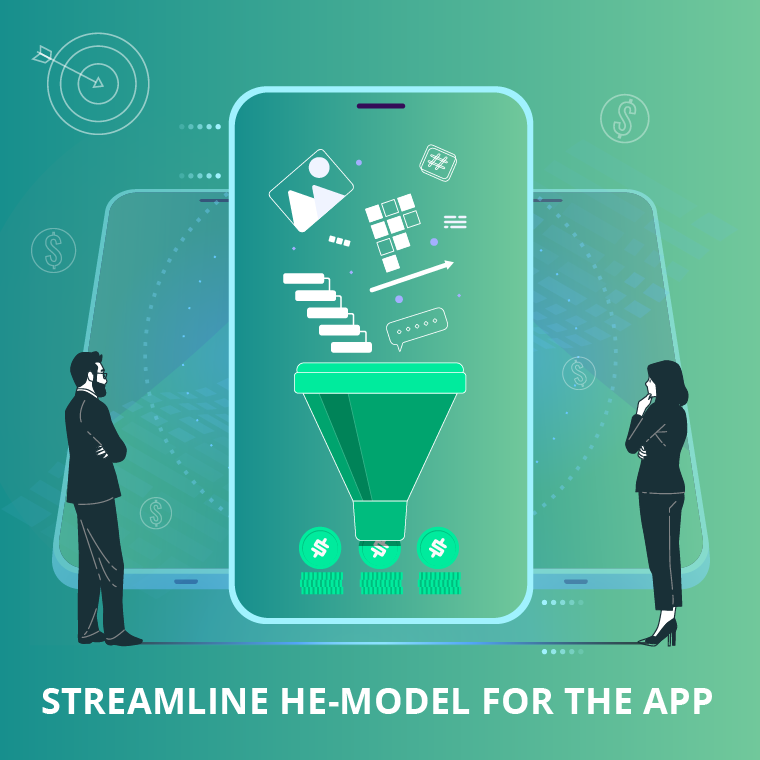If there’s ever been a year for disruptive tech, then we’d say that 2023 is it. With so many tools, from AI toVR, moving from the enthusiast corner to the mass market, there won’t be an industry unaffected by their approach. Pharmaceuticals, as you’ve guessed, are not an exception. So, how do we prepare for 2023 and what do we prepare for?In today’s article, we’ll talk about 3 important pieces of tech that for sure will dominate the business in 2023 and also 2 non-tech trends that, nonetheless, will be completely recontextualized by these new shiny toys. Let’s dig in.
Virtual and Augmented Realities
Virtual and Augmented Realities have real potential to change the way we market products both to HCPs and patients alike. With VR, it is possible to create immersive experiences to educate patients about their condition and treatment options in a way that makes sense to them. It’s one thing to sit there through a long lecture (maybe they’ll sprinkle some images in!) about how this or that drug will affect you. It’s another to actually see how it’s gonna work.
For instance, a couple of years ago MSD Austria partnered with Vrisch XR provider to create a simple VR game to demonstrate how proper medication dosage literally removes LDL cholesterol from a patient’s body, creating that intuitive understanding of the drug’s mechanism that hasn’t been there before.
VR’s capability to educate and inform doesn’t stop there, however, as it can also be used to communicate product value to doctors and medical practitioners. This is what Novartis accomplished in tandem with TRO when they created their VR training module to help medical professionals treat CAR-T infusion neurotoxicity. Through the virtual, interactive course, trainees got to learn how to treat the patient in this particular scenario, thus improving the drug’s general effectiveness and adoption by properly educating HCPs on how to deal with the drug’s side effects.
VR is an important element of Education 4.0, which is critical to Pharma 4.0, the streamlining of pharma manufacturing in the 21st century. It is not just about bringing new technologies to pharmaceutical manufacturing, it’s also about making completely new ‘advanced therapies’ ready for production - Brian Duncan, chief operating officer of Quality Executive Partners (QxP)
AR isn’t lagging behind either. Although it may seem that it simply leans on the good ol’ “show, don’t tell” trick, its longevity is well-justified.
Creating on-demand visual aid to whatever the user is reading, leads to better retention of information and an overall better experience and engagement with the dossier. Pfizer partnered with Poppr to create an AR extension of their brochure. When pointed at a specific page, the user’s smartphone would playback a video that explains a discussed topic in more detail.
The implications here are tremendous, as the same technology can be applied to other pharma niches. What’s stopping you, then, from creating an AR-empowered brochure on a new drug that can explain the drug’s effect, mechanisms, and side effects without cramming your brochure with 100 pages worth of text?
AR helps maintain the informational density of a scholarly article while providing it in a memorable, and easy-to-digest format.

Global VR and AR share in the healthcare market is expected to reach $5.1 billion by 2025, so we should see even more intricate implementations of these technologies in the upcoming years.
Now as to the question of which one to focus on?
Although both technologies promise a lot of exciting things, we honestly feel like AR is going to be a safer bet. AR is easily available to the majority, all you need is a smartphone that has been developed in the last 5 years.
For VR, though, the cost of entry is steeper, requiring you to buy a VR helmet that costs at least $200. So, if you’re trying to reach the biggest audience, both HCPs and patients included, AR will net you a better ROI.
Sorry, Mark, your Metaverse dreams will remain just that for now.
-
Artificial Intelligence
It’s not the first trend on our list (well, we do need to keep you scrolling somehow), but if there’s only one you should focus on, it’s definitely AI.
And don’t get us wrong. Although AI models such as ChatGPT and DALL-E have been dominating the pop-sci headlines for the last year, our prognosis is anything but reactionary.
AI’s ability to not only churn through heaps of data but provide actionable steps on how to utilize it is nothing short of revolutionary.
The power of AI can change the way how we think not only about manufacturing but distribution and marketing of pharmaceuticals and if you’re not hopping on this train, soon you will be forced to race against it on foot.
So, what does make AI so alluring, really?

Image by upklyak on Freepik
For one, let’s talk about precision medicine, the ability to predict how patients’ genetics and medical history will make them react to a specific drug. Without AI, precision medicine is a far-fetched dream, available only to the wealthiest on the planet that can afford such a bespoke treatment approach.
AI allows us to scale this approach to drug distribution, identifying entire demographics that will react better to a particular drug.
It can also help us look at the existing solutions from a different angle. The model created by BenevolentAI has the capability of examining the existing drugs and compounds to identify how its components can be repurposed to target an entirely different disease!
If we take diabetes as an example, novel treatments, and manufacturing technologies require specific individual information from previous treatments and trials. With the help of AI, we can process all that information exceptionally faster than before which can help us prevent and minimize the evolution, spread, and complications caused by any given disease - Juan Pablo Fornassari, Director of Governmental Relations and Public Affairs at Roche Diabetes Care Argentina
In sum, we gain an ability to better and faster identify the target audience for our new or existing product. And since AI models give us legitimate HEOR and not just hypothetical scenarios, we can push our AI-powered insights straight into manufacturing, distribution, and marketing quicker than ever.
-
Blockchain Technology
Blockchains, crypto, NFTs…it all sounds like a word salad that nobody really understands, and you just do this smart, understanding nod when somebody starts talking about it.
Ah yes…blockchain…Splendid!
Not going to lie, the tech has been reduced to buzzwords which makes it difficult to understand the beauty and power behind it. And, most importantly, why pharma companies should care.
But they should!
In the most simple terms, blockchains are about creating this tamper-proof ledger, the record of information that cannot be altered by one party without the other getting a heads-up about it. As some say, it’s about enabling trust in a trustless environment.
So how does it actually help with communicating value?
Think about it when a company puts up Trustpilot reviews front and center on its website. They’re so confident about the legitimacy of their business that they’re not afraid to hide public information about what they’re doing.
Such a move builds up trust and communicates the company’s credibility.
Using blockchain is similar. You’re basically saying: “Hey, we’re 100% legit. Here, we will even use this middleman to securely track and transfer all required data so you know there aren’t any shady dealings.
Blockchain is that middleman. Although, unlike a human person, blockchains cannot be reasoned with, bribed, or tampered with. They will always have a pure record that can’t be altered.
One great example of a blockchain application is MediLedger Network. MediLedger allows for the secure and precise exchange of information between pharmaceutical companies to expedite the enforcement of contracts and rules of conduct. It allows pharma companies to automate otherwise mundane processes like customer evaluation, data audits, and chargeback errors by offering an impartial judge, if you will, to quickly assess and evaluate all complaints against the information that is available on a public ledger.
Effectively, it reduces that feeling of one party having an upper hand over the other and guarantees an equal relationship.
Start-ups like FarmaTrust and TraceLink, meanwhile, use blockchain technology to create tamper-proof records of drug supply chains. By improving record keeping through blockchain, distributors can easily check if the stock that they have received is legitimate or counterfeit, giving them more security and confidence about the product they’re receiving.
From the other side of the table, manufacturers can easily dispute claims if their product has been tampered with or otherwise altered. For example, certain medications need to be stored in a specific temperature range. Connecting temperature sensors to the blockchain means that no party can cry foul and claim that temperature protocols have been followed if the public ledger says they weren’t.
The current point-to-point systems infrastructure lacks the ability to keep data in-sync across the healthcare supply chain, which ultimately increases the risk of counterfeit, diverted or otherwise illegitimate products. The pilot serves as a key milestone in demonstrating that blockchain technology is a viable option to address the complexity of building an interoperable system needed for DSCSA 2023 - David Vershure, Vice President Channel and Contract Management at Genentech.
All in all, blockchain technology is all about establishing trust across the convoluted chain of pharma companies, HCPs, health insurance providers, and so forth by providing a golden standard of authority that cannot be altered by any party.
-
Even More Custom-tailored Communication
We’ve been talking about technology for a while, so let’s take a break and focus on humanities. Yes, customized communication still going to dictate the course of value communication for the upcoming year, if not a decade.
And there’s really no reason why it shouldn’t.
As we moved deeper into digital frontiers (“thanks”, COVID), people, both HCPs and patients, quickly become desensitized to the bombardment by cookie-cutter messaging that does not resonate with them or their values. There are only so many times you can open an email with a headline taken from HubSpot’s “Top 10 Headlines to DECIMATE reader’s minds” before you immediately send them to the SPAM folder.
Today, receiving customized messaging is a bare minimum. And if you’ve still been on the fence, there’s no better time to start tailoring your messaging to very granular demographics than now.
The Big Data and Natural Language Processing advancements have made it easier than ever to quickly create personas for any demographic that you’re trying to reach, giving you actionable tips on the language, visuals, and messaging to utilize in your communication.
For instance, you can use Big Data to quickly process prescribing patterns and electronic health records to provide you a general overview of a specific HCP’s M.O.
Using, AI algorithms (think ChatGPT but for the pharma niche) you can then quickly draft a skeleton of a messaging campaign that will have a higher chance of engaging with your desired audience.
However, for how much I am gushing about digital overlords taking over the industry in full force, these systems are still at the stage where they benefit from human oversight. You can’t fully trust it to not make mistakes, and it’s harder to put the cat back in the bag once it’s been out.
We are talking now about targeted messages to HCPs and having self-service digital assistance. Any evolutions need targeted and personalized messaging across different channels. This kind of personalization is different from the core business of pharma. There’s no point in reinventing these things because this is where partnership makes much sense, and it is happening. - Dr. Geetha Thiagarajan, CTO Life Sciences and Healthcare business unit, Tata Consultancy Services
-
Omnichannel Marketing
VR, AI, personalized medicine, blockchain…we’ve covered a lot of exciting things in this read but it’s important to understand that it’s not enough to laser focus on any of those things.
As an example, imagine that you put all your eggs into a Virtual Reality basket. Yes, you’re going to have the best VR experience ever, and if somebody ever stumbles upon it, they’ll be the happiest and most enlightened than they have ever been…but what if they don’t?
Hence, omnichannel marketing.
We’re no longer finding that marketing is just a case of utilizing various engagement channels and hoping that that’s a good enough experience because that’s what multichannel marketing was focused on. Now the experiences need to be orchestrated across channels. So, journeys should be started in one place, continued in another, and ended in some third place. And that’s what actual omnichannel experience is; the end user demand that they get that seamless experience across the channels. - Jay Rabheru, Head of Marketing, Agency Services, Life Science and Healthcare, Tata Consultancy Services
The main idea behind here is that instead of repeating the same information ad nauseam across your all marketing channels, you can create a customer journey that drip-feeds them contextual information based on how they’ve engaged during the first contact.

Is it the first time they’re hearing about you? You can send them a short brief primer on the values and benefits that you can offer.
Are they aware of your company and what you do? Instead, send them a more personalized CTA that has more insights and details, and if they’re still interested, invite them to a webinar.
Omnichannel marketing is all about creating customer profiles and predicting their expectations and interests based on their past behavior.
Omnichannel is All About Not-Overwhelming With Info Dumps
We all love doing these 700-slide-long presentations in PowerPoints, anxious to not miss a thing…but is somebody going to pay attention for so long? But that doesn’t mean it has zero value! Through omnichannel marketing, you can cut down that old presentation into small chunks that you can distribute throughout your customer’s journey at the time and place where it makes the most sense.
Check out how we’ve turned one of ours into a short intro video that tells viewers more about Modelate’s mission and purpose. Then, if the viewers desire more, we can send them a bit of presentation that satisfies their search intent. It’s all about the journey.
So, why we do believe that this is one of the trends for 2023?
Because all the tech that we’ve discussed today feels like it’s been primed and prepared for this approach!
Instead of painstakingly assembling information about users yourself, you can use AI to process the data and create personalized communication templates for each niche that you’re targeting. You can then use language models to expedite the creation of custom messaging for each profile and, once they’re ready and are eager to learn more about you, wow them with your AR and VR offerings. And once they’re your impressed and trustworthy partner, blockchain ledgers are just a cherry on top that further solidifies your authority.
So, yes, while omnichannel marketing isn’t tied to any of these technologies, they make it so much easier that it’s already an expectation from even non-tech geeks. Big Tech like Amazon, Google, and alike are embracing this approach full-storm and once the people get the taste of the good stuff, they’ll be expecting it from everywhere else, the pharma sector included.
Summing it All Up
2023 promises to be an exciting but also very disruptive year. The technology that has been just floating somewhere in the aether is here in full force and utilizing its potential is no longer a suggestion but a requirement.
And, also, consider this: half a year ago, barely anybody talked about ChatGPT. Now, it has the eyes of the whole world on it. So, while these are trends that we already can see, who knows what else is in store for 2023? Our friends from the industry keep some things vague but we’ll be excited to share more once we get more information:
“ I would expect more focus on standardized issues such as (reimbursement) coding and payer views based on historical decisions. Also, there will be a move into AI dossier development in the near future. The key question is rather again back to adotpion - how fast will and can big companies and payer systems move into an AI driven world. I can’t share any specifics yet but I will only say that there is definitely more to come in Q3/Q4 of this year;)” - Dr. Stefan Walzer, CEO, President & Founder at MArS Market Acces & Pricing Strategy GmbH
We concede that it can be a lot to take in - every trend that we’ve covered is worthy of a standalone article - and we are here to say that you don’t have to necessarily get everything on the same level that you know your business.
Modelate has been in the market of translating the wants of the Pharma business into a full-fledged reality for a while now (and AI is something that we did before it was cool), so if you are wondering where to start, just let us know.
We are ready to talk.
Back to other articles
